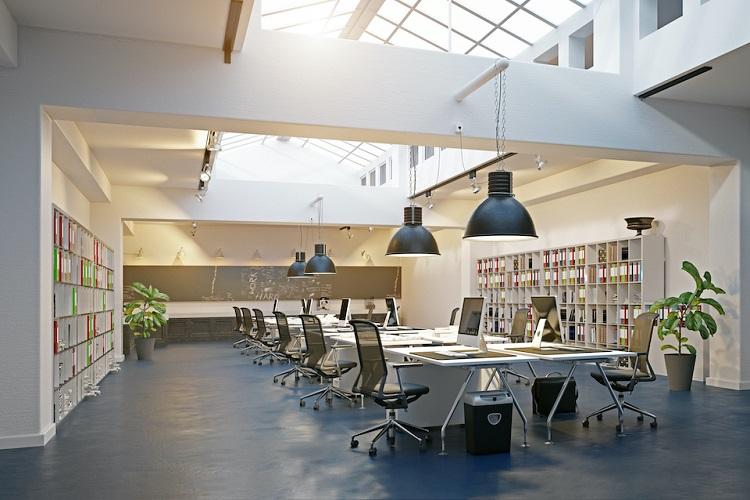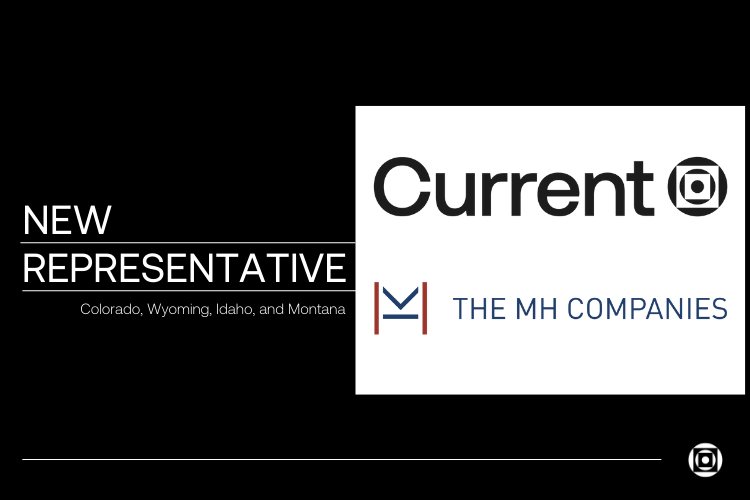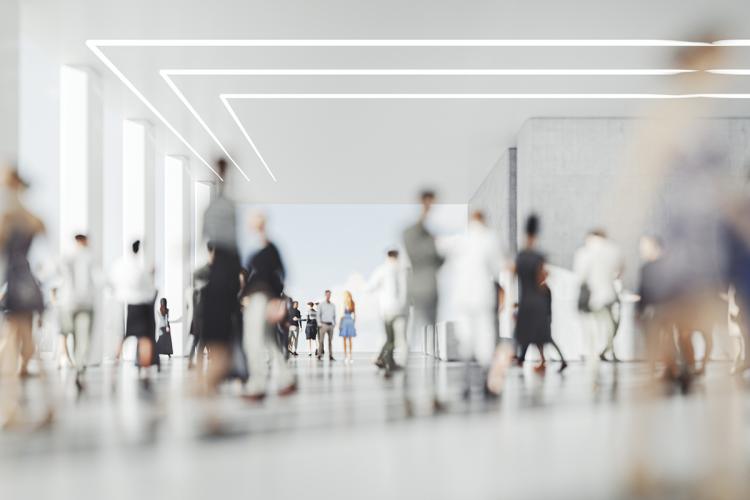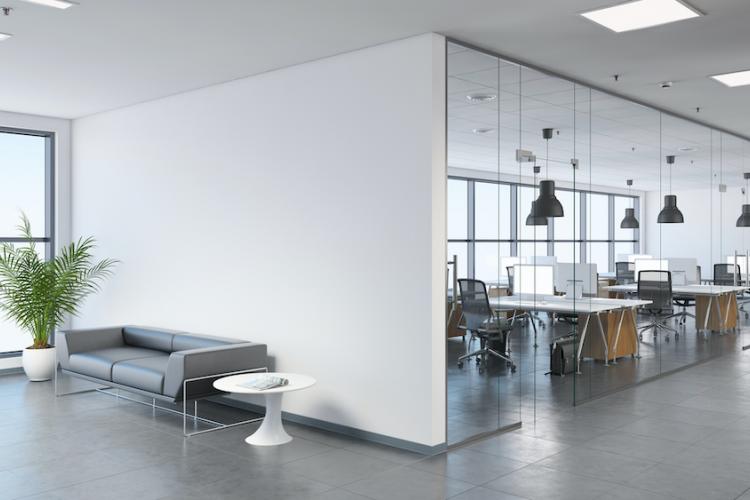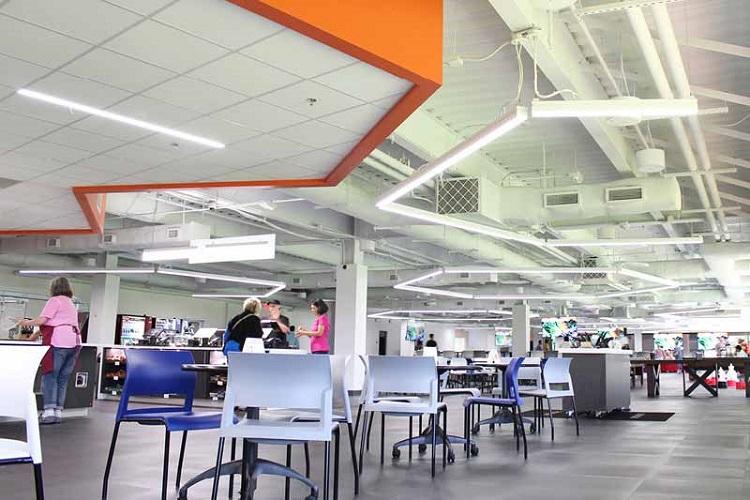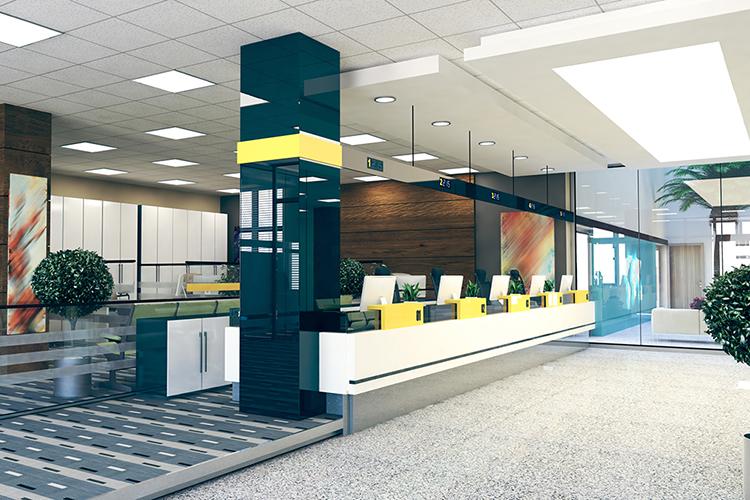How Commercial Buildings Benefit from the International Energy Conservation Code
How Commercial Buildings Benefit from the International Energy Conservation Code
How Commercial Buildings Benefit from the International Energy Conservation Code
Workplace lighting alone accounts for 10 percent of the energy our nation consumes. With nearly 157,000,000 employees clocking into the U.S. workforce, that’s a lot of energy.
Lighting in commercial buildings could guzzle an infinite amount of energy, but the International Energy Conservation Code (IECC) throttles the drain. The IECC strives to:
- Set minimum requirements for energy-efficient buildings
- Improve overall energy use in the long run
- Introduce guidelines for more cost-effective and comfortable buildings that last
In lieu of a legislated national building code, architects, contractors and electrical engineers turn to the IECC for the standards that guide energy efficiency in new and renovated buildings. Commercial lighting is more than just set dressing—it can have a profound impact on employee satisfaction and productivity. In fact, a recent study revealed that 68 percent of employees report dissatisfaction with the fixtures illuminating their workspace, and the sentiment leads to a significant drop in efficiency and well-being.
The IECC illuminates the importance of workplace lighting
While companies attempt to foster more collaborative environments or offer free gourmet meals to entice extended work hours, improving workplace lighting can be just as attractive of a perk.
Constructing buildings that conform to IECC not only saves money on utilities and minimizes a company’s eco-footprint, but lighting fosters creativity and boosts productivity amongst employees—benefits just as important to a company’s bottom line. You might say the key to happy and hardworking employees is found at the flick of a switch.
What changed in the 2018 edition of the International Energy Conservation Code?
In 2018, the code council introduced important new lighting requirements to improve the energy efficiency of commercial buildings. Next-generation lighting fixtures do more than just illuminate; they self-adjust based on factors like occupancy or time of day.
Lighting that adjusts based on ambient daylight
Have you ever tried to use your cellphone in direct sunlight and noticed how the screen automatically dims? Photosensors automatically detect ambient light and adjust screen brightness accordingly. The IECC introduced a similar feature for commercial buildings, requiring lights near windows and skylights to adjust brightness based on incoming sunlight to take full advantage of natural luminance.
Lighting that detects room occupancy
Why should lights continue to consume energy if no one is in the room? The IECC requires smarter lighting fixtures—ones that can sense the occupancy of a room—to adjust based on the presence of people in a given area. The new 2018 standards ask for lights to run for no longer than 20 minutes in an empty room.
Lighting that follows a schedule
Rooms like open-air foyers or atriums come with their own unique set of requirements, and the 2018 code takes these into consideration. For spaces that are not conducive to occupancy sensors, timers can control lighting based on normal expectations of occupancy.
These fresh additions to the 2018 code pave the way for new and exciting ways to design comfortable, vibrant workspaces.
How the right lighting partner makes IECC compliance easy
Each room in your office space has its own set of requirements. For example, lighting needs in a glass-covered atrium differs from that of a private office of a marketing executive. What are some ways you can customize the lighting experience and energy usage based on the unique needs of each room in your floor plan?
Conference rooms
Weekly meetings, brainstorming sessions, and annual planning summits—conference rooms are the hub of a company’s biggest planning moments.
Lights positioned above each seat don’t need to be as bright as those illuminating a speaker. Scene control allows occupants to customize brightness levels for different areas of the room. This creates a much more pleasant atmosphere for watching a teammate’s presentation.
When a session comes to a stop, so should the show lights. After 20 minutes of vacancy, the system automatically turns off all non-emergency lights.
Break rooms
Break rooms are at the epicenter of snack stops and casual conversation. While they’re frequently busy throughout the early part of the day, activity dwindles as the clock ticks towards evening.
Using top trimming, systems can automatically throttle the maximum power of an LED light. Top trimming limits the maximum power output to save additional energy.
Occupancy and vacancy controls light up the room based on activity sensors. Lights turn on automatically when an occupant enters the space for a much-needed breather. When it’s time to head back to their desk, all lights automatically turn off 20 minutes after exit.
Open office space
Open office spaces foster connection and interaction amongst employees. While traditional layouts silo employees into their own private rooms, open office spaces welcome everyone into the same space, creating a bazaar of collaborative workstations.
Daylight harvesting takes advantage of any sunlight that runs into the open space. Fixtures auto-adjust based on incoming natural light, bathing employees in what Harvard Business Review called the #1 office perk—natural light.
The IECC is at the forefront of guiding contractors, engineers and architects towards the right ways to build energy efficient commercial spaces. Many companies offer a patchwork of lighting solutions that meet IECC standards, but when it comes to designing flexible, smart and safe working environments, it’s important to partner with a team not only focused on your current needs—but one that helps power a smarter future.
To learn more about IECC 2018 guidelines, download our Energy Code Solutions Guide.

